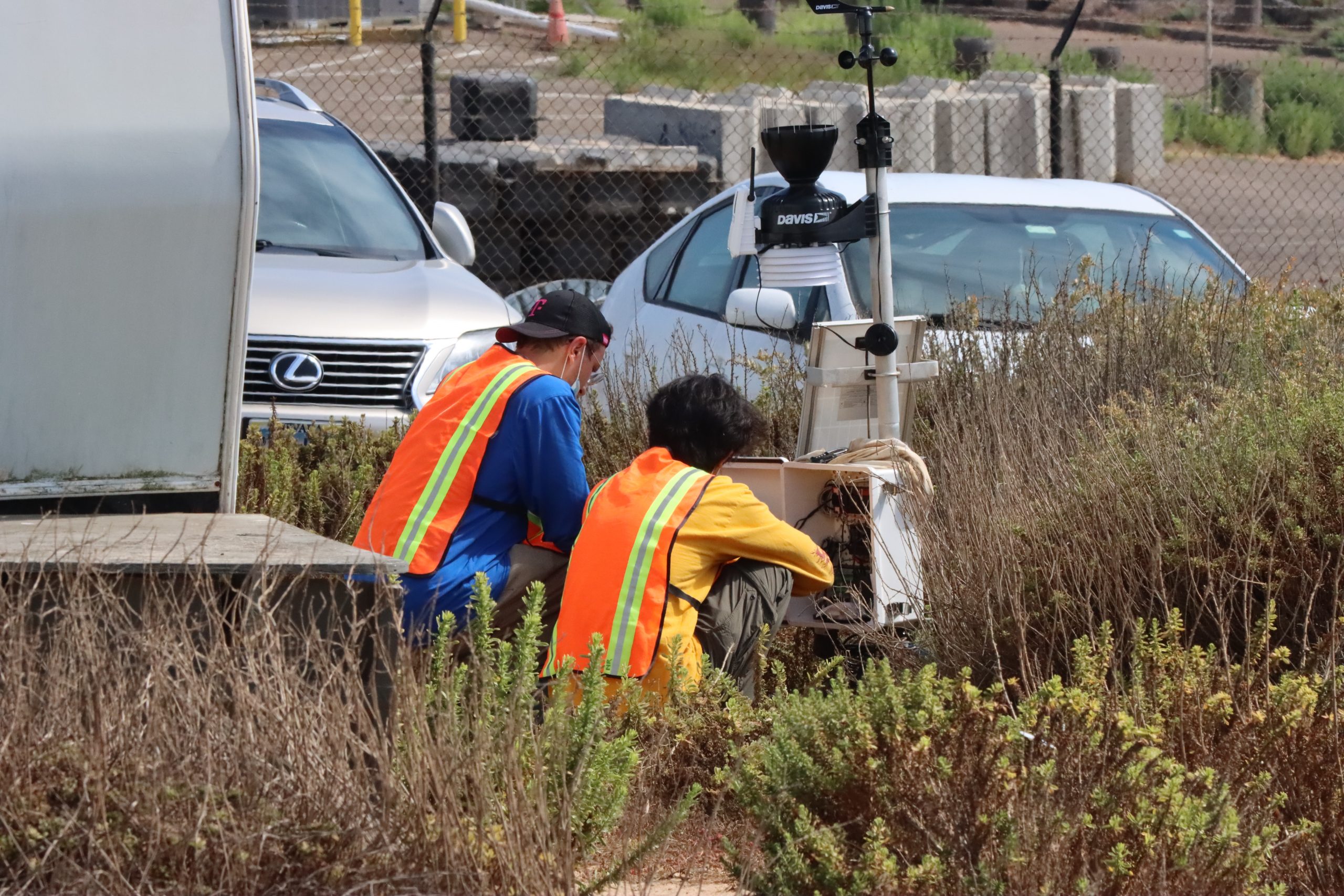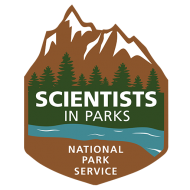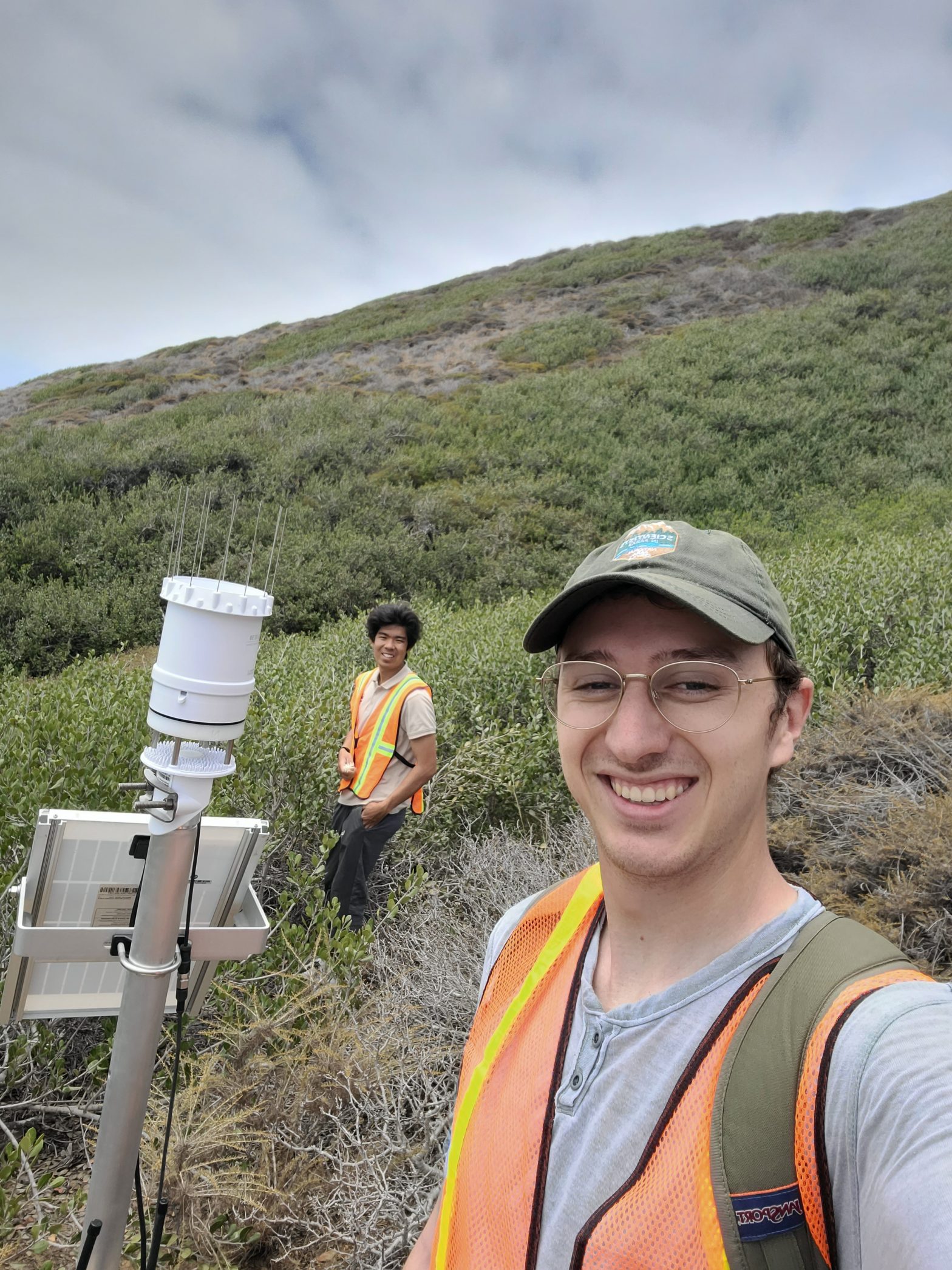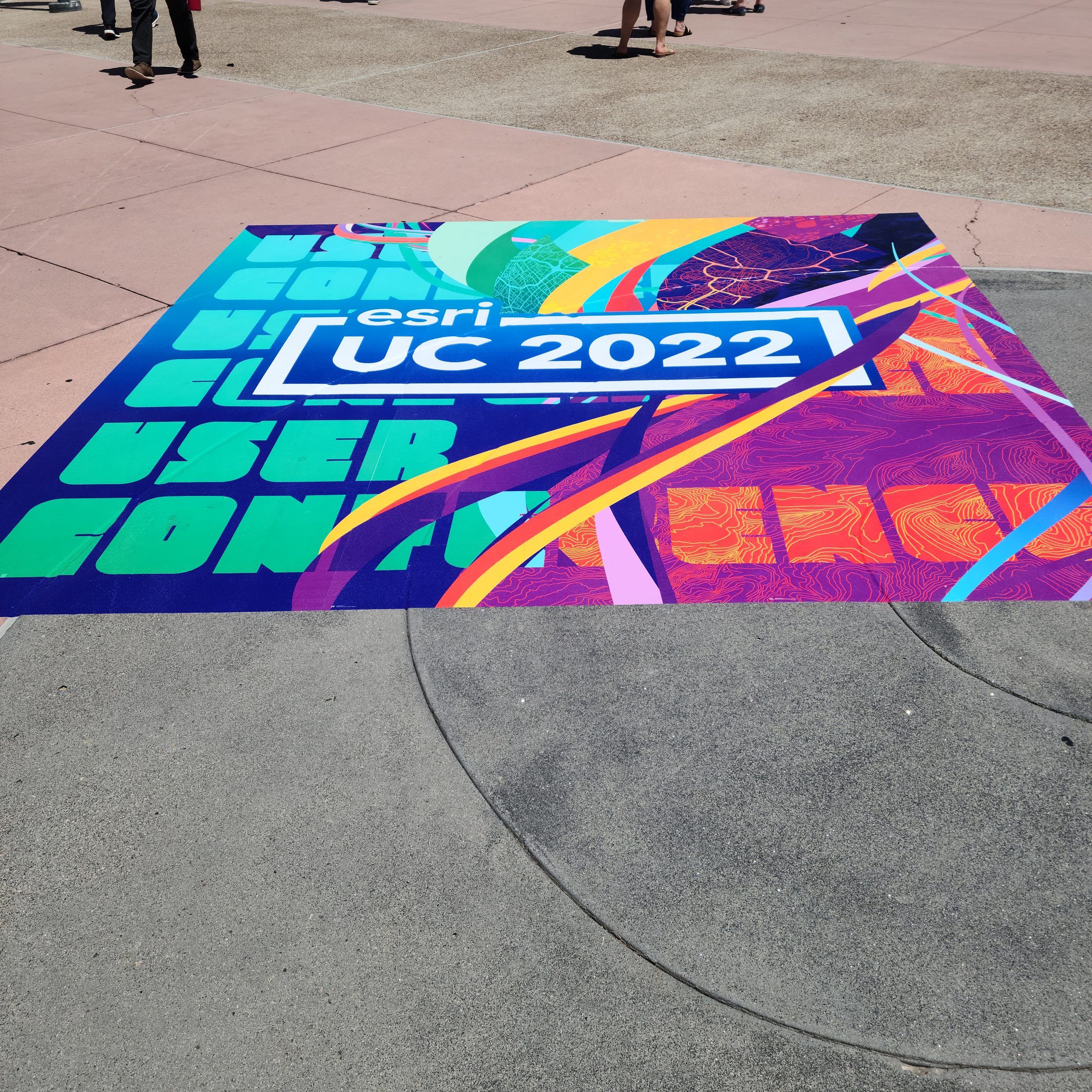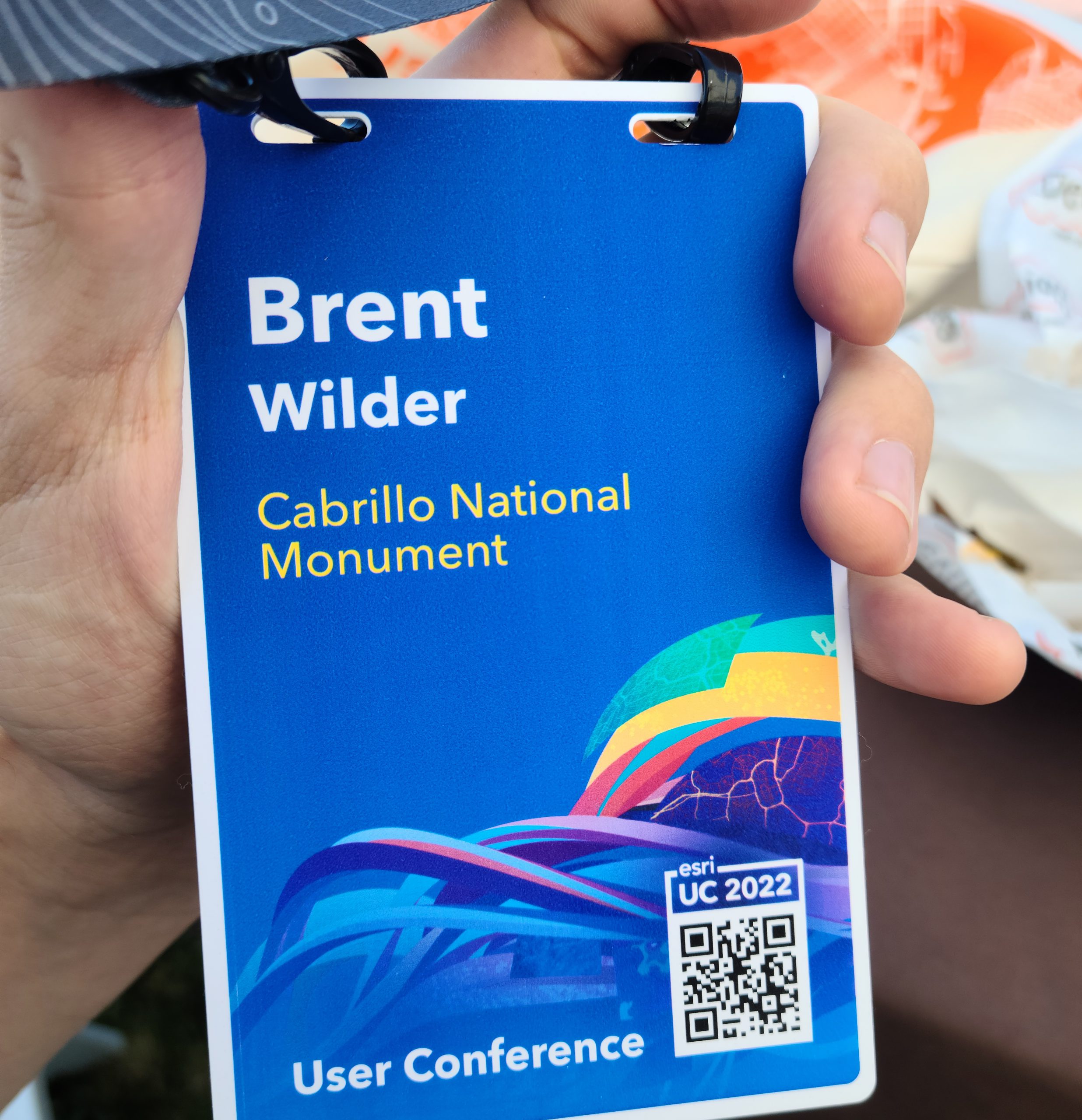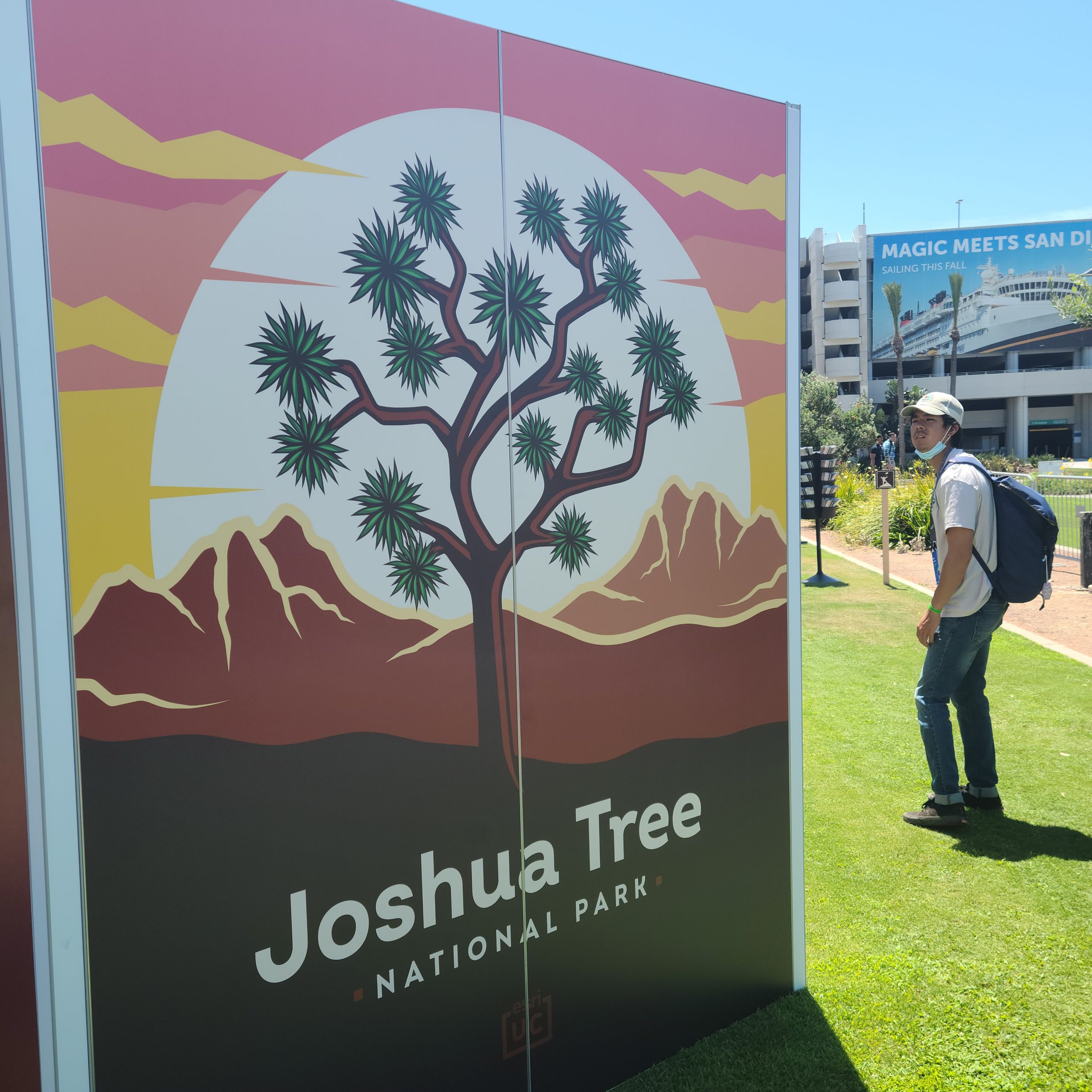Brent Wilder here again logging on for the last time!
Taro Katayama and I arrived at Cabrillo National Monument on May 16th, 2022 with the goal of establishing a long-term monitoring program to assess the duration and intensity of fog across the park. Natural resource scientists at the park are interested in understanding the spatial and temporal patterns of fog to 1) better understand if there are any areas that may be suitable for future native revegetation efforts, and 2) to see how fog changes on longer, annual timescales. So in step Taro and I!
We set off fast by constructing stations that were already bought by Dr. Linh Anh Cat at Cabrillo. We had four stations each with three leaf wetness sensors. As explained in earlier blog posts, these leaf wetness sensors mimic the shape of a leaf and measure the electric current across the surface to estimate the amount of water. For two of these four stations we installed Campbell Scientific ClimaVUE weather stations that were bought by Linh Anh. We quickly realized that for our setup to truly work, and be able to differentiate between rain and fog, we needed to know if rain occurred! With the ClimaVUE costing $3k (which would blow our entire budget), we had to be resourceful. We just so happened to find a community of folks online that use an open source software called Weewx. They developed an economical method that uses a combination of raspberry pi’s (tiny computers) programmed with Weewx, a Davis Vantage Pro2 weather station, and a MeteoPi Hat & Connector. Through soldering, coding, resoldering, and more coding, we were able to establish two working weather stations that have their own WiFi networks that park staff can communicate with using their field laptop! To demo how we went around collecting data from the finished stations we prepared a short video for you:
Taro and I also took the opportunity to attend the ESRI User Conference in Downtown San Diego, California. The conference was a week long and included some fascinating talks from researchers, consultants, and ESRI engineers. We also had a chance to network with folks in industry and learn more about the latest gadgets and tech. We were also really stoked to see an awesome NPS virtual experience containing places like Joshua Tree!
Finally, we had a chance to share this important work to friends, family, and park staff in the Naturally Speaking seminar series. This was a great opportunity for us to practice communicating science to the general public, and also to share knowledge of this project to park volunteers to promote sharing knowledge of fog to future park visitors.
That’s all I have for you! This has been such a fantastic summer full of great memories. I can’t say thank you enough to all of the park staff for everything they do (especially Lauren Pandori and Linh Anh Cat!). Finally, special shout out to Taro. This was such a massive, difficult project and could not have been possible without your knowledge and great attitude. I’ve enjoyed bouncing around ideas together and I hope we get to work together again on another hydrology project in the future!
